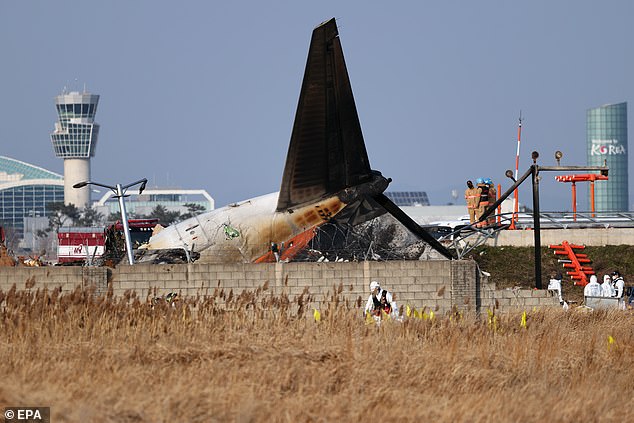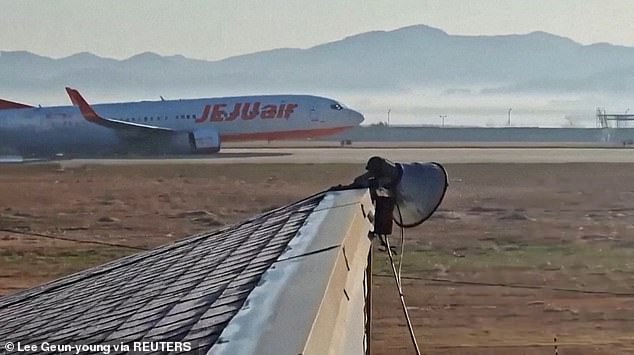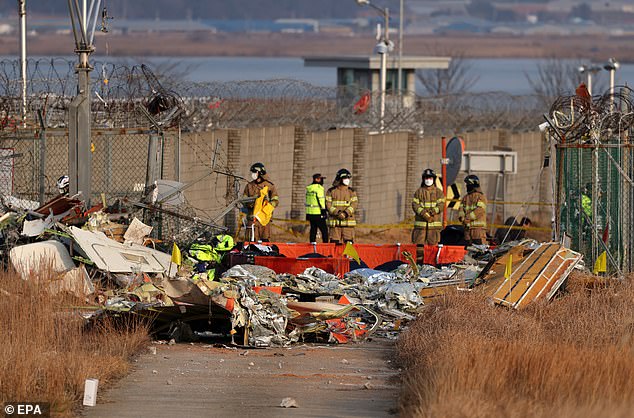Table of Contents
First there was the terrible weather and reports of a “wall” of geese. This was followed by a first aborted landing at Muan International Airport in South Korea.
Then a second catastrophic attempt, in which Jeju Air Flight 7C2216 careened down the runway, veered sideways, and crashed into a concrete wall.
The impact was devastating: the Boeing 737-800 burst into a giant fireball and the surrounding area was filled with seats, cushions, magazines, bags and shoes.
Of the 181 people on board, mostly Korean citizens returning home from Bangkok, the Thai capital, only two cabin crew members survived. Everyone else, including three generations of a family and the pilot, died.
Sunday’s tragedy marked the deadliest air disaster in South Korea in nearly 30 years. But it has also thrown the global airline industry into confusion as theories and counter-theories swirl.
Here, with the help of renowned aviation security expert Julian Bray, Jane Fryer unravels the nine unanswered questions about the doomed South Korean plane.
The fire following the plane crash in South Korea, which was the deadliest air disaster in the country in almost 30 years.
COULD THERE BE NORTH KOREAN SABOTAGE?
During the aborted first descent, witnesses on the ground said they heard a bang and saw a ring of smoke rising from one of the wings.
In theory, this could have been caused by a bomb hidden in a suitcase in the hold, but such an explanation is highly unlikely. The plane could also have been hit by a missile.
Another possibility is that a highly trained service agent cut the hydraulic cables. Although, as Mr Bray says: “Now we’re really entering James Bond territory.”
A kidnapping is also unlikely. Especially since, in his communications prior to the accident, the pilot seems calm and collected, without using security code words or pressing any alarms.
But no matter how far-fetched they may seem, researchers will have to examine all the possibilities before ruling them out.
WAS A ‘BIRD HIT’ REALLY THE CAUSE?
Bird strikes (collisions between a plane or drone in flight and a bird) are common. More than 1,400 bird strikes were recorded in the UK in 2022, of which around 100 caused damage to the aircraft in question.
In this case, all signs point to a bird strike. There were reports of a “wall” of geese in the vicinity of the airport and, at 8.57am on Sunday, air traffic control warned of bird activity in the area. Two minutes later, the pilot signaled ‘mayday, mayday, mayday’ and ‘bird strike, bird strike, turn around’, abandoning his first landing.
Around that time, a passenger sent a message to a family member to say that he had seen “a bird stuck in the wing”; this coincided with onlookers noticing the bang and a ring of smoke.

The wreckage of flight 7C2216 at Muan International Airport
“This could be because the engine builds up pressure after ingesting the bird, which is suddenly released. Or it could be that the engine has broken down,” says Mr Bray.
“And one of the carbon fiber turbofans could have cut and sheared a hydraulic line (which controls the landing gear and brake plates).”
But a bird in the engine could only be part of the problem. The hydraulic system is deliberately divided to avoid this type of disaster and there are also several backup systems in case of failure.
WHY WAS THE SECOND LANDING ATTEMPT A DISASTER?
As the pilot was circling for his second landing attempt, he knew he was in trouble.
There are two methods to slow down a jet aircraft during landing. First, use the wing flaps to act as a pneumatic braking system; these can be extended up to a 45 degree angle to increase wing area and therefore reduce speed.
Second, when the plane reaches the runway, the “reverse thrust system” acts as an air brake to slow the plane to a safe speed.
Both have backup systems – automatic and manual – in case of emergency.
However, it appears that neither of these systems worked properly on flight 7C2216, as the plane hurtled toward the runway at full speed and landed upside down in a classic emergency landing.
But with no wheels, the pilot had no way to turn as the plane accelerated down the runway, or when it veered to the right, toward the solid concrete wall, and exploded in a huge fireball.
WHAT DOES A CONCRETE WALL DO ON THE RUNWAY?
This wall housed an antenna base to help planes land in bad weather. Normally, the base of an antenna near the runway would be collapsible, but this one had brick pillars and was filled with blocks.
Bray explains: ‘There is an international code that governs the design of airports to keep them safe.

Jeju Air plane seen coming down runway before crashing

Firefighters search through the wreckage of the plane, after the disaster that killed 179 people
‘Barriers are generally limited to hedges and metal fences with concrete posts, which would slow the plane but would not destroy it in the event of an impact.
“This is very strange and needs investigation because of course he shouldn’t have been here.”
WAS THERE ANY PROBLEM WITH THE PILOT?
There is no current indication that the pilot was suicidal, but all options will be considered.
It is also unclear whether there were one or two pilots on the flight deck. Cost cutting across airlines has resulted in “single crewing” some cabins.
COULD THE TRACK HAVE BEEN THE FAULT?
At 2,800m this was a long runway and under normal circumstances it would be more than enough.
After the initial aborted landing, the pilot announced that he was going to “turn around” and take the runway in the opposite direction. He didn’t ask the air traffic team, but simply informed them, probably because he couldn’t turn the plane around because the controls weren’t responding, Bray suggests.
There is nothing sinister about arriving at the track from a new direction. All busy airports have two-way traffic.
At Heathrow, planes land in one direction before noon and in the other in the afternoon to avoid the sun.

Kang Ko, Jin Lee Seon and their son died on board the flight. They shared images of their first family vacation on Instagram.
In an emergency like this, air traffic controllers would have already cleared the runway and surrounding area, and put fire trucks on alert.
DID THE WEATHER PLAY A ROLE IN THE ACCIDENT?
A severe weather warning had been issued, but experts consider the bad weather a red herring.
‘He was an experienced pilot with 9,800 flight hours. He knew what he was doing,” says Mr Bray.
COULD THE BLACK BOXES ON THE PLANE REVEAL SOMETHING?
Each aircraft carries a voice data box and a data recorder. Known collectively as black boxes, they are actually bright orange and were kept aloft near the rear exit of this plane.
The voice data box is a continuous recording device, which saves and time-codes all cockpit conversations between pilots and communications with air traffic control in the hour before the accident.
The data logger tracks every movement the pilot makes (buttons pressed, switches flipped, etc.) over the same period of time.
The recordings can take weeks to decode, but together they can help create a complete picture. However, in this case the data logger is damaged, which could make investigations difficult.
WHAT WILL HAPPEN NEXT?
No expense will be spared in the investigations to find out what went wrong, especially since there are 5,000 Boeing 737-800s flying around the world.
In addition to decoding the black boxes and unraveling the plane’s final minutes, workers will reconstruct the plane using a skeletal structure and whatever pieces of the fuselage they can salvage from the debris field.
By analyzing the fragments, a more complete picture can be built. For example, if shrapnel bends outward, this could indicate an explosion on board. If it is facing inwards, this could be a sign of an external force such as a missile.


